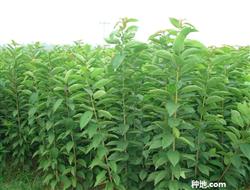What should I pay attention to when planting big cherries?

What should we pay attention to in cherry cultivation? The cherry is warm, not cold-tolerant, drought-resistant, waterlogging-resistant and afraid of strong wind. It is suitable for cultivation in areas with an annual average temperature of 10 ℃ ~ 15 ℃. Practice has proved that when the annual average temperature is higher than 15 ℃, big cherries tend to blossom more and set less fruit. The introduction and development of big cherries should not only depend on the local annual average temperature, precipitation, sunshine, frost-free period and other factors, but also carefully analyze the local microclimate characteristics, first trial planting, and then development. At present, there are only more than a dozen excellent cherry varieties that have been proved by cultivation, and each variety has some shortcomings. Such as the red light cultivated by our country, it has large fruit, bright color, juicy sweet taste, high and stable yield, but it enters the full fruit period late, the fruit skin is thin, the meat is soft, so it is not suitable for processing, storage and transportation, and is only suitable for small area planting. In the future, cherry varieties with beautiful appearance, hard pulp, good quality, light crack, resistance to storage and transportation, fresh food and processing should be selected. The selection of good rootstocks suitable for local cultivation is the key to the successful cultivation of cherry. The most important thing is to see whether the rootstock is resistant to root cancer and virus disease. In the old cherry producing areas, the development of big cherries must not use continuous cropping land, let alone use continuous cropping land to raise big cherry seedlings; in the newly developed cherry producing areas, under the premise of identifying improved varieties and rootstocks, we should strictly control root cancer and virus diseases. Pollination and fruit thinning are required. Most large cherry varieties do not bear fruit or have very low seed setting rate, so cross-pollination is needed. Some big cherry orchards with no high yield and suitable age for years and little fruit are not affected by freezing injury, but mainly due to unreasonable configuration of pollination trees, rare florescence and poor pollination. Pioneer and Rabins are all ideal pollination varieties. It is also necessary to timely remove the weaker fruit branches, remove the smaller flowers, and remove the small fruits and malformed fruits that are not in the right shape and position. It is appropriate to leave 2 or 3 fruits on each strong fruit branch. Click to get more cherry planting techniques click to get more fruit planting techniques
- Prev

Why do cherry leaves curl?
How to fertilize cherry trees scientifically? Cherry is the earliest fruit maturing species in deciduous fruit trees, which is a tree or shrub. The height of the tree is (2 ~ 7) m and the crown diameter is (3 ~ 6) m. (3-6) years began to bear fruit, (7-10) years entered the full fruit period, sustainable (15-20) years, life span of several decades. Key points of fertilization technology:.
- Next

How to cultivate cherry seedlings
How to cultivate cherry seedlings? The quality of seedlings not only directly affects the speed of tree growth, the early and late fruiting and the high and low yield, but also has a great influence on the adaptability and stress resistance of trees. Therefore, production should pay attention to breeding quality...
Related
- Moge, come on! The staff of the peasant association in the producing area of cantaloupe were frightened when the crowd gathered.
- Causes and Solutions of low Fruit setting rate of Apple
- Symptoms and control measures of passion fruit virus disease
- Fruit growing lesson: how do apple orchards keep high yields?
- Can you build orchards in the mountains? What are the pros and cons?
- How to manage the coloring period of Crisson grape?
- This paper introduces the processing technology of two kinds of fig products.
- How much is a month for retired teachers in rural areas by 2020?
- How can strawberry planting increase sugar content? We should pay attention to management in many aspects.
- What are the cultivation techniques on how to improve the yield of golden fruit?

